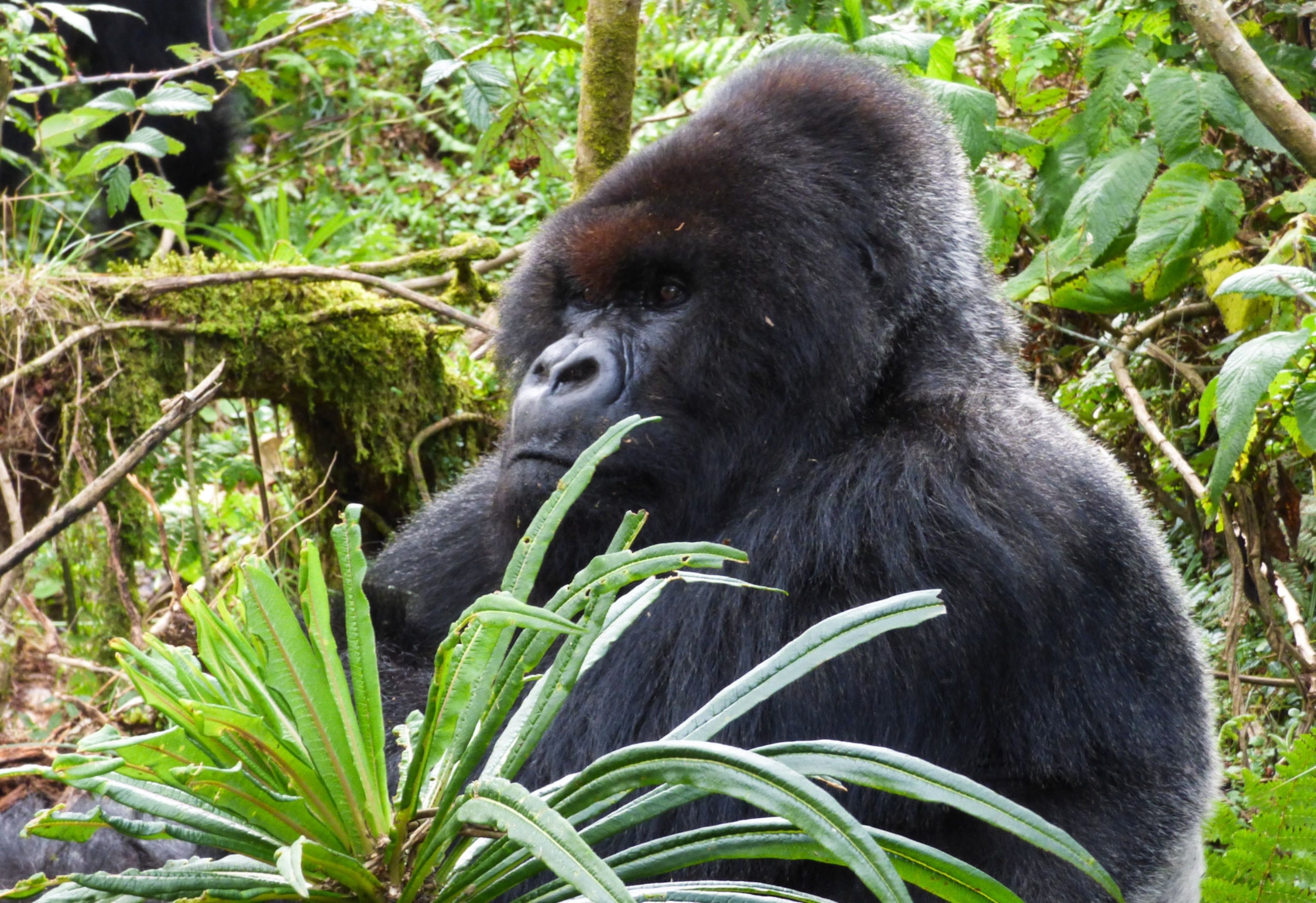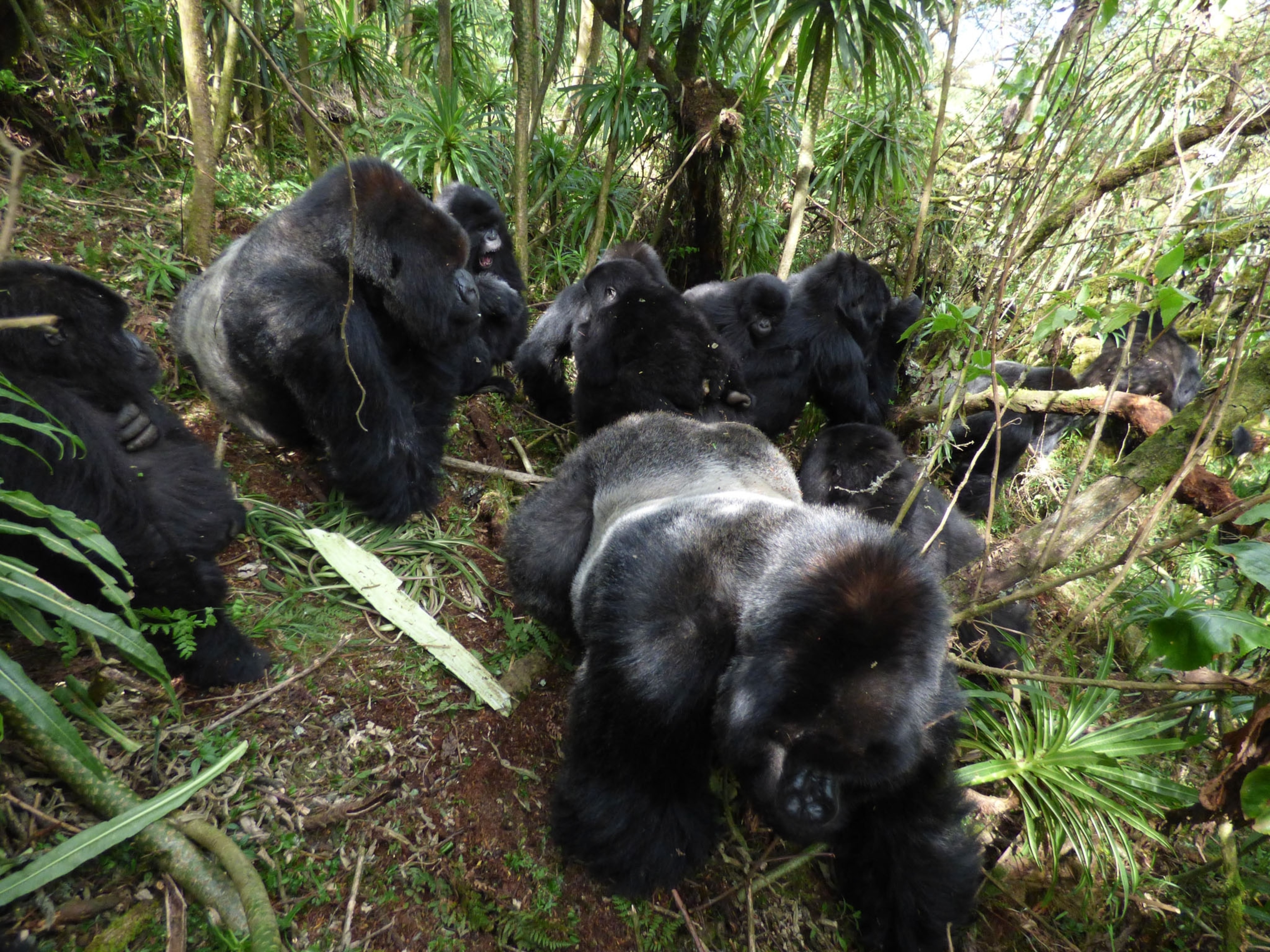
Gorilla Made Famous by Dian Fossey 'Returns From the Dead'
Feared dead a few months ago, a silverback named Cantsbee has reappeared from the mist.
It can't be—but it is. Three months after he disappeared without a trace, Cantsbee the mountain gorilla has returned.
One of the last two mountain gorillas named and studied by Dian Fossey, Cantsbee was presumed dead last October.
No gorilla of Cantsbee’s stature has ever been observed leaving his family group voluntarily, and continued searches of his home in Rwanda’s Volcanoes National Park yielded no sign of the 38-year-old silverback, according to the Dian Fossey Gorilla Fund. The average age for an individual in this gorilla population is somewhere in the 20s.
But on January 5, trackers in the national park confirmed that the great ape had rejoined his group; where he's been all this time is anybody’s guess.
Tara Stoinski, president of the Atlanta-based Gorilla Fund, says it’s highly unlikely that the dominant male ran off with a previously unknown female or transferred to another group.
And even if he had, her organization has 73 trackers on the ground monitoring up to 12 neighboring gorilla groups 365 days a year. If a gorilla celebrity like Cantsbee had been nearby, someone would have seen him. (See more beautiful gorilla pictures.)
“Now, whether he was sick and couldn’t keep up with the group and fell behind, or he just went off, we don’t know the answer to that and never will,” says Stoinski.
“It just goes to show that after 50 years, there are still new things that we’re learning and observing about these gorillas.”
No Ordinary Gorilla
Cantsbee was born in 1978, the same year Fossey founded the Digit Fund, a gorilla-preservation group. The Digit Fund was renamed in Fossey’s honor after she was murdered in 1985. Of the hundreds of animals Fossey observed personally, only two remain—Cantsbee and an elderly female named Poppy. (Read Fossey's 1981 National Geographic magazine article about the imperiled apes.)
In his lifetime, Cantsbee has built an impressive resume: longest lived male ever recorded, leader of the largest troop any scientist has ever observed, and father of more offspring than any gorilla known to science. And now with his sudden reemergence, his legend continues to grow.
Interestingly, before Cantsbee’s disappearance, his son Gicurasi had slowly been taking on a greater leadership role. Naturally, he became the group’s heir apparent in the older male’s absence. Stoinski says it’s unclear how those roles will change now that Cantsbee is back—but that her trackers are eager to see how it all plays out. (See "As Mountain Gorillas Bounce Back, Rwanda Names Gorilla Newborns.")

“It’s going to take us a little bit of time of watching the group to see if he comes back in a secondary role or if he challenges his son,” she says.
Cantsbee Lives Up To His Name
When Cantsbee disappeared in October, trackers weren't surprised: Gorillas can’t live forever, after all, and this one had a better run than most.
The silverback’s return, however, is infinitely more interesting, if for no other reason than that it rewrites what we thought we knew about dominant male behavior. (Read Fossey's 1970 article in National Geographic magazine about making friends with gorillas.)
“He could choose to leave again, but now, if he does, the assumption won’t be made that he passed away,” said Stoinski. “This has taught us something.”
Cantsbee’s name has a whimsical story. While observing the troop, Fossey had originally mistaken Cantsbee’s mother for a male. So when the scientist showed up one morning and found this supposedly male gorilla nursing an infant, Fossey apparently exclaimed, “It can’t be!”
“It was an aha moment, and now it’s the same thing,” says Stoinski. “I just think it’s cute that he’s earned his name twice.”





